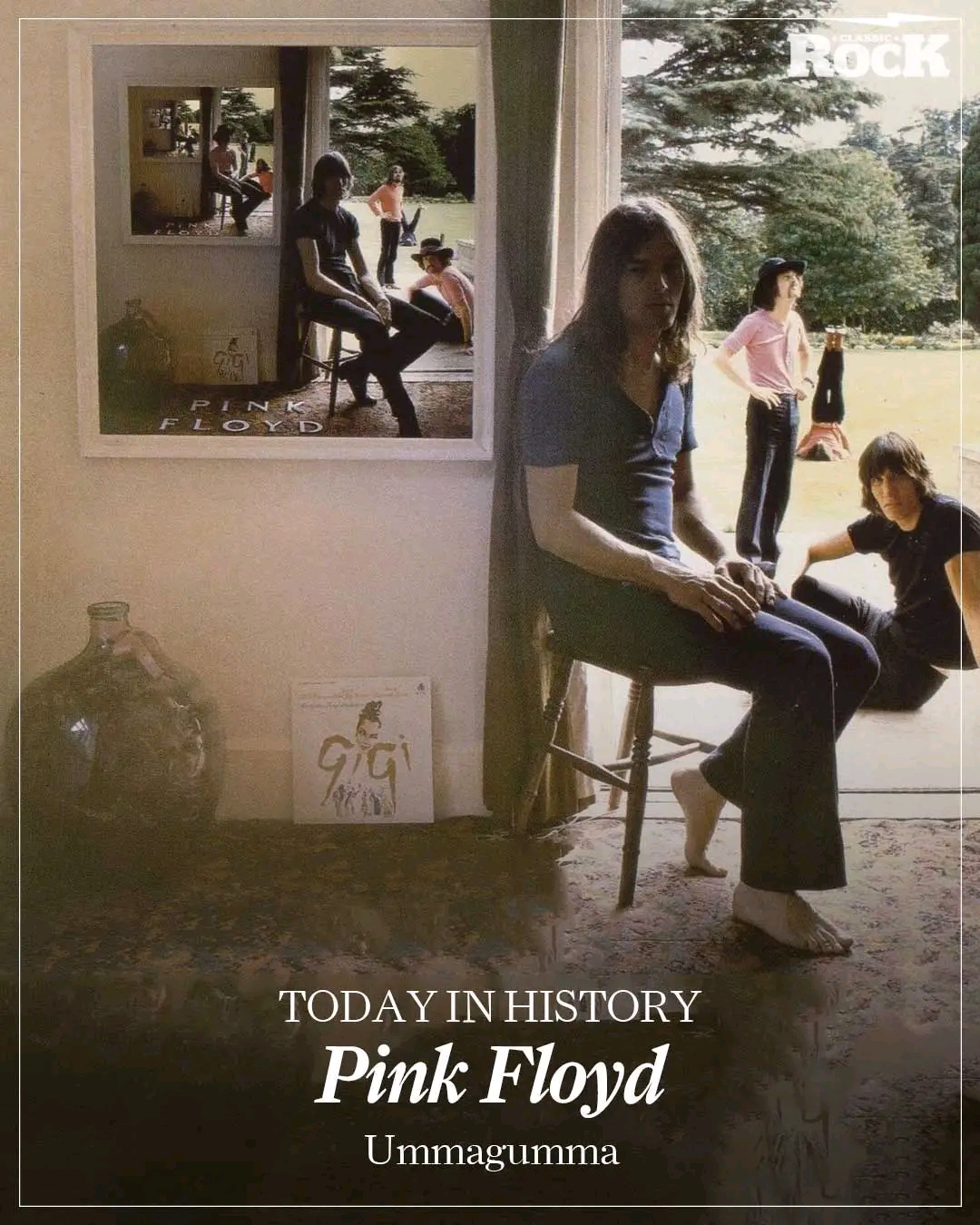On this day in 1969, Pink Floyd released Ummagumma — a double album that split itself between live performances and studio experimentation. Coming at a pivotal moment in the band’s evolution, it stands as both a fascinating curiosity and a deeply flawed experiment. Recorded after David Gilmour’s arrival and the departure of Syd Barrett, Ummagumma captures a group trying to rediscover its identity, straddling the fading glow of psychedelia and the uncertain dawn of a new era.
The first disc, a live recording, revisits material from the band’s early years — tracks like “Astronomy Domine,” “Set the Controls for the Heart of the Sun,” and “Careful With That Axe, Eugene.” While the performances are technically sound, they often feel more like re-enactments than reinventions. The improvisational fire that once defined their live shows burns low here, replaced by precision and control. Only “Careful With That Axe, Eugene” manages to summon real tension, its eerie build and chilling screams offering a glimpse of the dark power Pink Floyd would later master.
The second disc, the studio half, is where Ummagumma truly divides opinion. Each member was given half a side to compose freely — an idea that promised innovation but delivered more fragmentation than unity. Richard Wright’s “Sysyphus” drifts through avant-garde dissonance; Roger Waters’ “Several Species of Small Furry Animals Gathered Together in a Cave and Grooving with a Pict” is more conceptual performance art than music; David Gilmour’s “The Narrow Way” shows sparks of melodic strength that hint at the band’s future direction; and Nick Mason’s “The Grand Vizier’s Garden Party” experiments with percussion and tape loops to mixed results.
What Ummagumma reveals most clearly is that Pink Floyd, for all their individual creativity, were far stronger as a collective force. The solo pieces expose their limits, not their genius — proof that the band’s magic depended on the collision of their ideas, not their isolation. It’s an album of ambition without cohesion, curiosity without clarity.
And yet, Ummagumma remains essential to understanding Pink Floyd’s evolution. Its chaos paved the way for the structure and focus that would define masterpieces like Meddle, The Dark Side of the Moon, and Wish You Were Here. It captures a moment when the band dared to experiment, even at the risk of failure — a necessary step toward greatness.

Leave a Reply